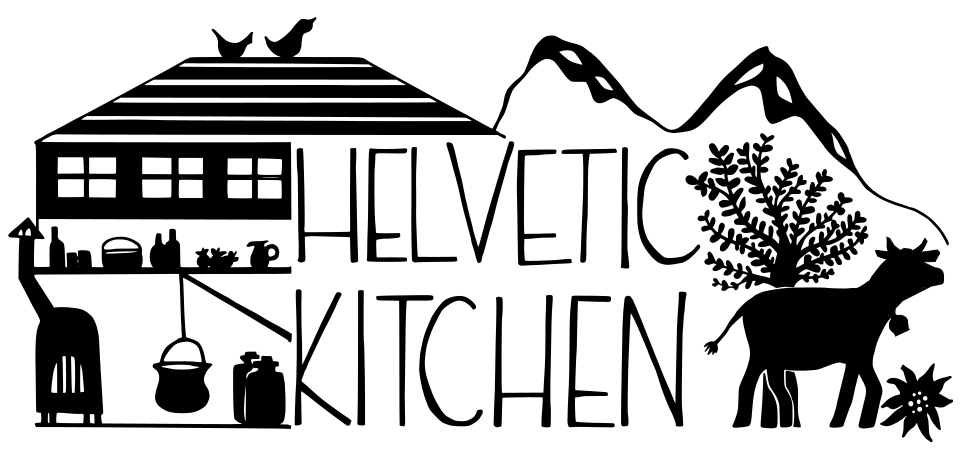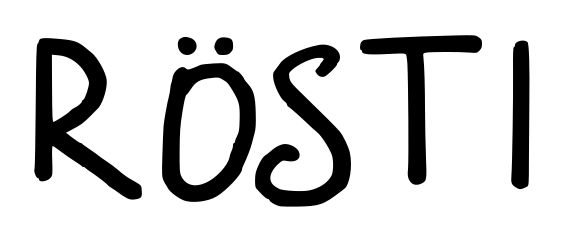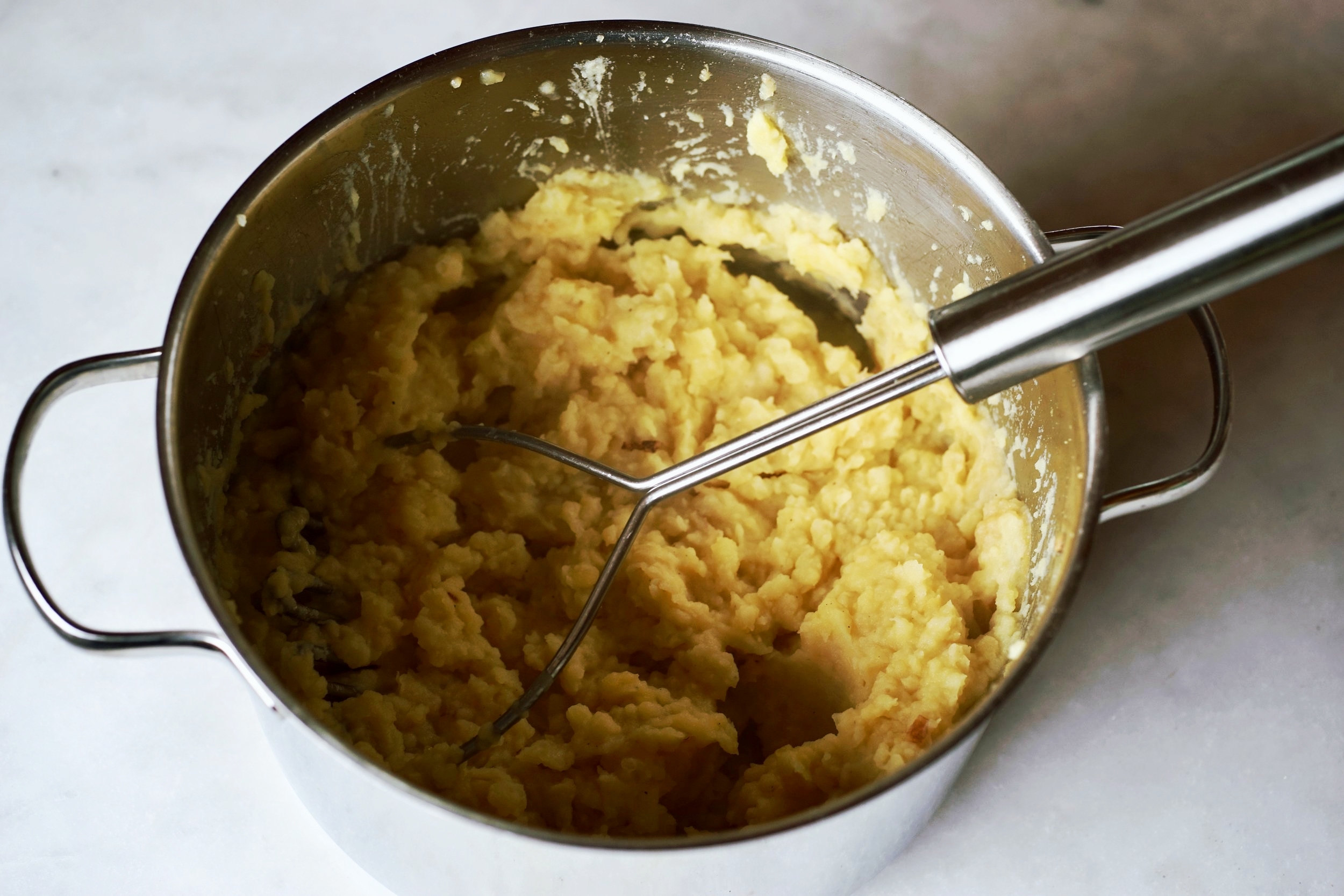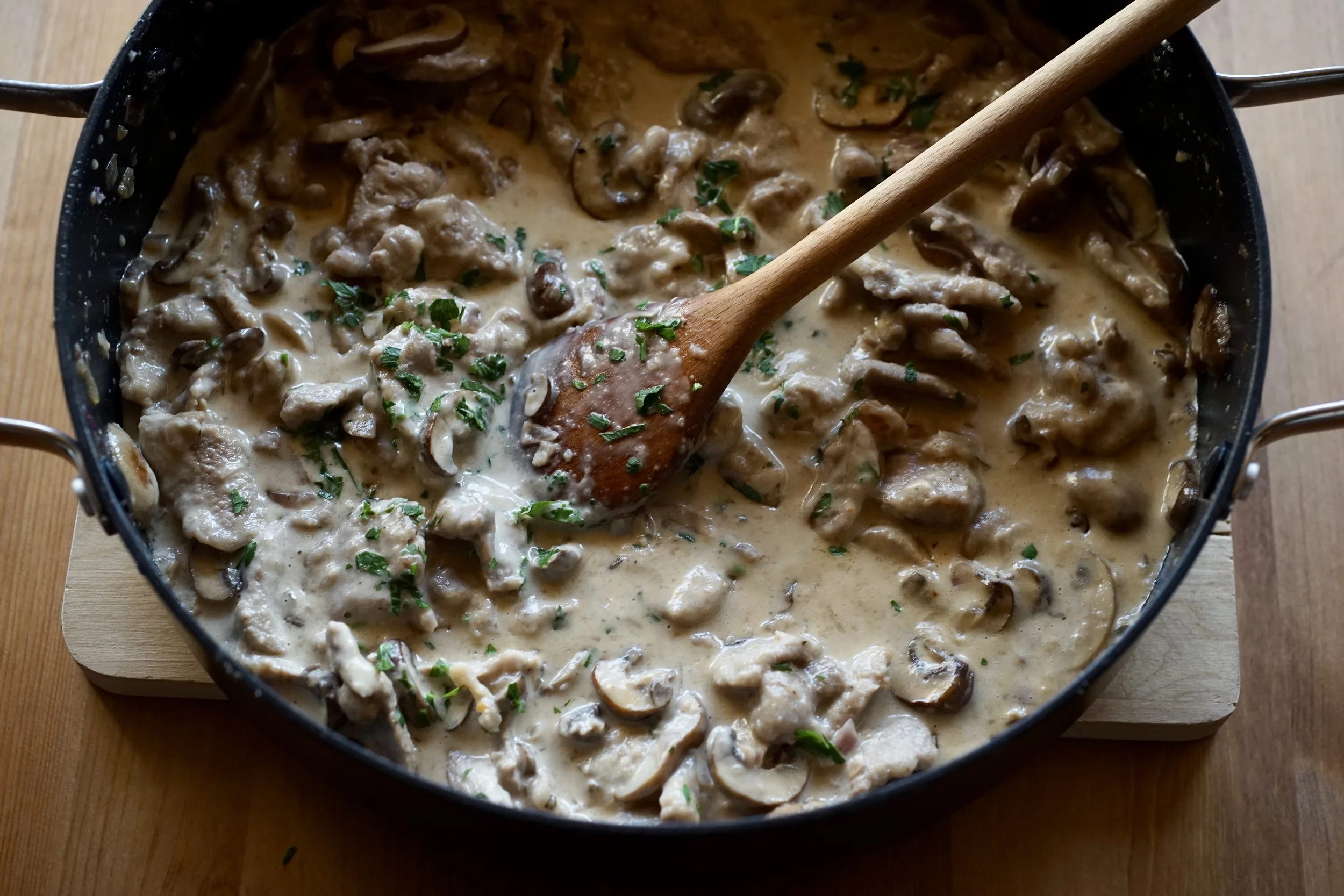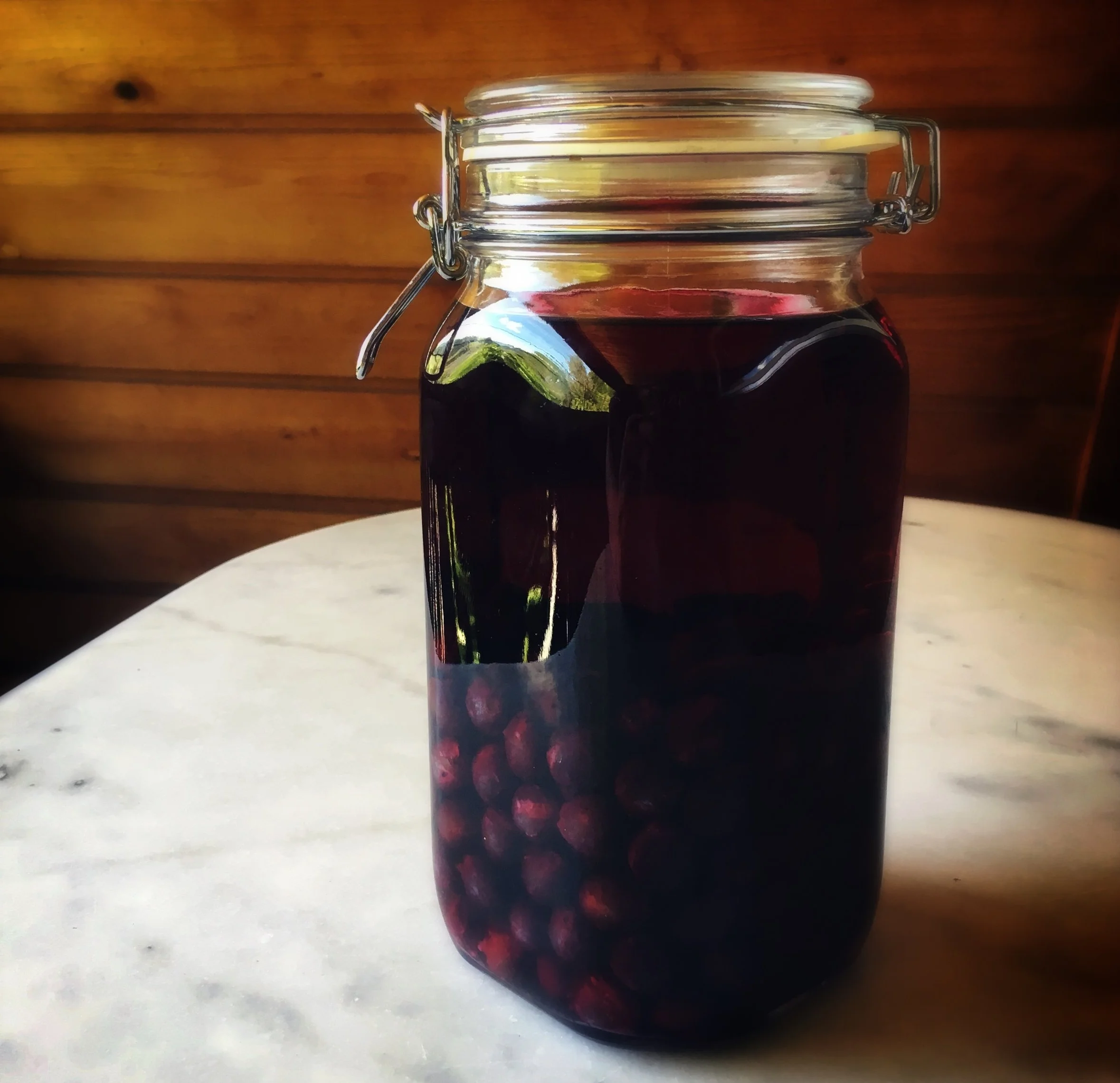Rösti
It was Swiss farmers who first enjoyed Rösti—for breakfast. Today, this grated, fried potato pancake is enjoyed at any time of day, either as its own meal or as a side dish.
Rösti recipes vary wildly in the type of potato, fat, and method for cooking, but this is my mum’s recipe and it’s the one I like best. For me, perfect Rösti is golden and buttery crisp on the outside and tender, though not uniform (ie. mashed), in the middle.
I haven’t always had luck making Rösti (see recipe for Plain in Pigna, here) but I think I have finally cracked it.
The secret ingredient?
Patience.
Pans for Rösti
For a long time I blamed my inability to make Rösti on the fact that I didn’t have a cast iron pan. Although this is the ideal pan to use, you can make great Rösti in any frying pan, provided you grease it generously. I do, however, find it easier to slide the pancake in and out using a pan with slanted, rather than straight, sides.
Potatoes for Rösti
I haven’t had a lot of success making Rösti with raw potatoes (you’re better off with Plain in Pigna), pre-boiled are preferable, and many swear that they need to fully cool before they are grated, resting at least a day in the fridge.
As for type, I almost always use a waxy potato (festkochend / pommes de terre ferme / patate resistente). Using a floury spud is also possible (make sure you don’t overcook it when boiling, and be gentle when grating), though depending on texture, this might be closer to a mashed potato pancake than traditional Rösti (although, let’s be honest, you can’t really go wrong with any variety of potato fried in butter).
Fat for Rösti
The best fat to use is clarified butter or lard. This allows you to cook at a higher temperature because the milk solids that burn easily have been removed.
In Switzerland one form of clarified butter is Bratbutter/beurre à rôtir/burro per arrostire and is found in most supermarkets.
Our local dairy sells Ghee, which also works a treat.
In Canada, my mum never had clarified butter, so simply used canola oil with a bit of butter melted in, for flavour.
Flipping Rösti
I’m pretty sure that I will never be able to flip Rösti quite as elegantly as Frau Hiltebrand here, so I use the plate method.
Most people (including my mum) place a plate over the frying pan, then flip the whole thing over, cooked side on top. Then they simply slide the whole thing back into the pan.
I always find that the potatoes stick to the plate in this method (even if you grease the plate), then I become impatient and end up forcing them back in (hashbrowns).
So I generally slide my pancake out onto a plate cooked side down, position the frying pan over the pancake, then gently flip it back into the pan (though I’ve also lost potatoes over the side of the pan, so this is not a foolproof method either).
Do what feels most comfortable to you.
As for what to serve with your Rösti, the choice is yours. Every part of the country has its own variety—in Bern they add the bacon right to the potatoes and in Aargau they add onions. Appenzellers throw in cheese, and of course the Glarners add Schabziger. In Zürich, Rösti is the traditional side to their famous Züri Gschnätzlets. I like a plain Rösti with some thin slices of cheese and onions, applesauce on the side, and a fried egg on top.
There are a million recipes for Rösti online, with many variations. Betty Bossi has dozens of versions (celery root! ground beef! apples!) and even my beloved Felicity Cloake weighed in with her perfect (British) Rösti (goose fat!).
between 800 g and 1 kg potatoes
nutmeg, salt and pepper to taste
enough fat to cover your pan (see below)
Ideally the day before, boil the potatoes in their jackets, in salted water. This usually takes around 20-25 minutes. You are looking for potatoes that are cooked, but still a little firm. Cool them completely and keep them in the fridge until needed.
Peel the potatoes (the skin should come off very easily, and usually I just scrape it off with a butter knife), then coarsely grate with a cheese grater (or Röstiraffel, Switzerland’s very own Rösti grating tool).
Season with nutmeg, salt and pepper, using your hands to gently toss through the grated potatoes.
Heat your pan over high heat. Add fat to the pan and when this starts to splutter, add the grated potato and press it down all over. Turn the temperature down to medium and let it cook without disruption for about 12-15 minutes (I find it helpful to set a timer, otherwise I get impatient and try to lift the pancake before a nice crust has formed).
Now, try to give the frying pan a shake and if the pancake moves, use a spatula to peek underneath.
When the bottom is golden brown you are ready to flip.
Slide the pancake out onto a plate, cooked side down, add a little more fat to your pan, then gently flip it back into the pan. (Or turn the whole pancake upside down onto a plate, add a little more fat, then slide it back in).
Cook for another 12-15 minutes or until golden.
Swiss supermarkets designate potatoes to use for Rösti, but a good choice overseas would be Yukon Gold, Maris Piper or similar.
The kind of potatoes that you would use for Gschwellti (the little boiled spuds that accompany raclette, fondue or chäs) are good for Rösti and easy to grate after a night in the fridge.
The best fat to use is clarified butter. In Switzerland this is called Bratbutter/beurre à rôtir/burro per arrostire and is found in most supermarkets. This allows you to cook at a higher temperature because the milk solids that burn easily have been removed. If you don’t have this you can use lard, or just heat oil in the pan and add a little butter for flavouring.
Potatoes and…pears?
Birästunggis

